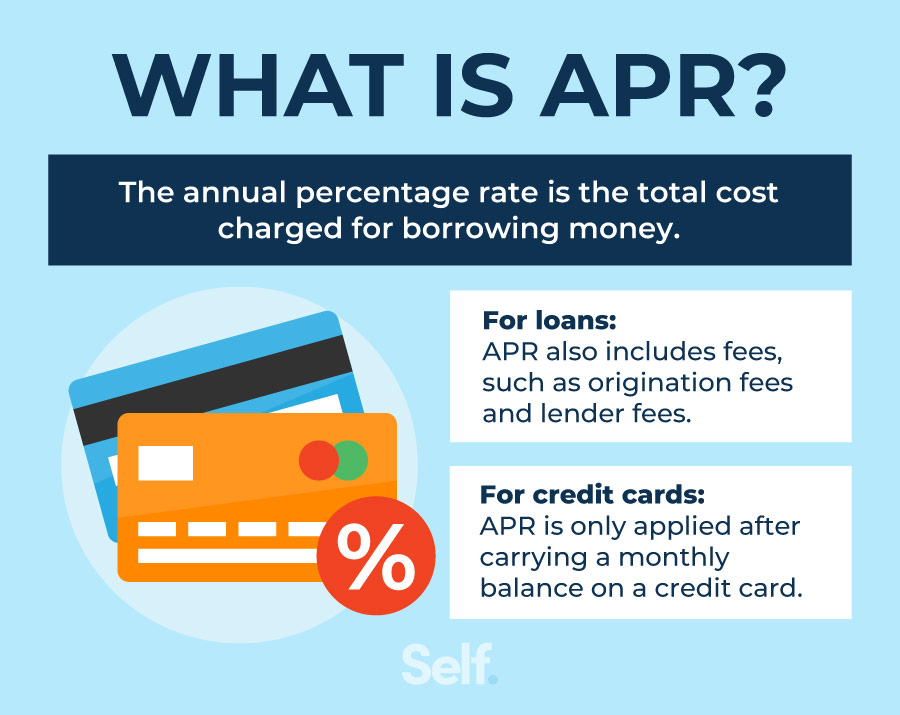
Easily compare APR rates from lenders below.
The total cost of borrowing money per year is represented by the annual percentage rate, or APR, on a car. Its a percentage of the loans balance, plus additional fees. While both are percentages, the interest rate and the annual percentage rate are not the same. The APR includes fees and other costs associated with borrowing money, whereas the interest rate on a car loan is only a percentage of the principal, or the amount borrowed.
For instance, a car loan with an interest rate of 4% might have a 4% 3 percent APR. Fees not included in the interest rate account for the difference. It is typically more accurate to calculate a loan’s cost using the annual percentage rate (APR) rather than just the interest rate. A higher annual percentage rate (APR) may be charged by a lender if their fees are greater, even if both offer the same interest rate.
How to Calculate APR for a Car Loan
The easiest way to calculate the APR of a car loan is to use an online APR and interest rate calculator. However, this involves knowing the estimated monthly payment, interest rate, and other fees.
You can find out the loan APR from your lender if you don’t have these numbers on hand. Additionally, the lender might offer an explanation of how the APR was determined.
Here are some frequently asked questions about car loan APRs:
How Do Lenders Decide Interest Rates and APRs?
The following variables are used by lenders to calculate your interest rates and APRs:
- Credit score
- Amount of money borrowed
- Length of the loan
- Down payment
- Type of vehicle (new vs. used)
Higher income and credit score borrowers typically have the lowest interest rates. Some lenders even promote 0% APR to borrowers with excellent credit scores.
Financing a used car rather than a new one can also result in a lower interest rate and annual percentage rate. Finally, if at all possible, choose a shorter term for your loan because a longer repayment period will result in an increase in your interest rate and APR. A larger down payment often entitles you to a lower annual percentage rate, allowing you to borrow less money.
Do Car Dealerships or Banks Offer Better APRs?
APRs are typically lower offered by banks and other financial institutions than by dealerships. Nonetheless, applying for an auto loan at a bank is typically more time-consuming and difficult than getting one through a dealership.
The dealer will apply for a loan with several lenders and run a credit check on you. This lets you compare available rates easily. Some dealers offer in-house financing, as well.
How Are Fixed and Variable APRs Different from Each Other?
A fixed APR remains constant for the duration of the loan. If you make 4% payments in the first year of your auto loan, you will keep making 4% payments in the following years. If you obtain a loan during a period of low interest rates, a fixed-rate APR may be a wise choice.
Conversely, a variable APR varies in tandem with changes in market interest rates. The Federal Reserve’s actions could result in an increase or decrease in your annual percentage rate. When you purchase your car, if interest rates and APRs are high, a variable APR may allow you to pay less in interest as rates decline.
However, theres always a risk that rates will increase. Your monthly payment will probably go up if the APR goes up.
Can Refinancing Reduce Your APR?
In certain cases, refinancing can lower your annual percentage rate (APR) on a car loan, whether it is variable-rate or fixed-rate. You may be eligible for a lower APR if market rates have decreased or your credit score has improved.
Before you accept the terms of the new loan, it’s a good idea to carefully calculate how much you would have to pay for it. The fees associated with refinancing are typically quite high, so the amount you save on APR may not be sufficient to pay for them.
With over three years of experience covering personal finance and insurance, Elizabeth Rivelli is a freelance writer. She is well-versed in a number of insurance categories, such as property and auto insurance. Numerous online finance publications, including The Balance, Investopedia, and Reviews, have featured her byline. com, Forbes, and Bankrate.
FAQ
How is APR calculated on a car loan?
Essentially, you multiply your interest rate by a year, or 12 months, to determine your annual percentage rate. Let’s take an example where you have an interest rate of 3% on your loan. You then multiply . 03 x 12 and there is your APR at 3. 6%.
What is a good APR for a car?
Credit scoreAverage APR, new carAverage APR, used carSuperprime: 781-850. 5. 61%. 7. 43%. Prime: 661-780. 6. 88%. 9. 33%. Nonprime: 601-660. 9. 29%. 13. 53%. Subprime: 501-600. 11. 86%. 18. 39%.
Does APR affect monthly car payment?
A variable APR may enable you to pay less in interest when rates drop if you purchase your car at a time when interest rates and APRs are high. However, there’s always a risk that rates will increase. Your monthly payment will probably go up if the APR goes up.
What does 3.99 APR mean?
The cost of borrowing on a credit card is known as the annual percentage rate, or APR. It refers to both the annual interest rate and any associated fees that you will pay with the card if you have a balance. APR often varies by card. For instance, you might own a single card with an APR of 9. 99% and another with an APR of 14. 99%.
Read More :
https://www.caranddriver.com/auto-loans/a42167421/how-to-calculate-apr-for-auto-loan/
